Ham radio world is running to involve as many operato ras possible to use a special callsign to celebrate the 6Øth Anniversary of the Antarctic Treaty Signature.
So far, the following ones have already got the special call by the telecomm authorities in their respective Countries
| Progressive | Country | Special Callsign | WAP Reference | QSL info |
|---|---|---|---|---|
| 1 | Germany | DR6ØANT | WAP-314 | DL2VFR |
| 2 | Austria | OE6ØANT | WAP-315 | OE3MDA |
| 3 | Germany | DQ6ØANT | WAP-316 | DL1RUN |
| 4 | Germany | DPØPOL/MM | WAP-317 | DL5EBE |
| 5 | France | TM6ØANT | WAP-318 | F8DVD |
| 6 | Ukraina | EM6ØKTS | WAP-319 | IK2DUW |
| 7 | Hungary | HA6ØANT | WAP-320 | HA6LT |
| 8 | Argentina | RG6ØANT | WAP-321 | UA6GG |
| 9 | Switzerland | HB6ØANT | WAP-322 | HB9DAX |
| 10 | Italy | II6OANT | WAP-323 | I1HYW |
| 11 | Russia | R6ØANT | WAP-324 | RZ3EC |
| 12 | South Africa | RA6ØANT | WAP-325 | RZ3EC |
| 13 | Belgium | UE6ØANT (Instead of RB6ØANT) | WAP-326 | RZ3EC |
| 14 | Chile | RC6ØANT | WAP-327 | RZ3EC |
| 15 | Japan | RJ6ØAN (instead of RJ6ØANT) | WAP-328 | RZ3EC |
| 16 | United Kingdom | RK6ØANT | WAP-329 | RZ3EC |
| 17 | France | RL6ØANT | WAP-330 | RZ3EC |
| 18 | Norway | RN6ØANT | WAP-331 | RZ3EC |
| 19 | Australia | RT6ØANT | WAP-332 | RZ3EC |
| 20 | USA | RU6ØANT | WAP-333 | RZ3EC |
| 21 | New Zealand | RZ6ØANT | WAP-334 | RZ3EC |
| 22 | Antarctica | RI6ØANT | WAP-335 | RZ3EC |
| 23 | Uruguay | CW6ØATS | WAP-336 | CX8ABF |
| 24 | UK | GB6ØANT | WAP-337 | GMØLVI |
| 25 | Belgium | OQ6ØANT | WAP-338 | ON1DX |
| 26 | Poland | SP6ØANT | WAP-339 | SP3POB |
| 27 | Argentina | LU5DSM/ANT | WAP-340 | LU5DSM (Radio Club DX S. MIguel) |
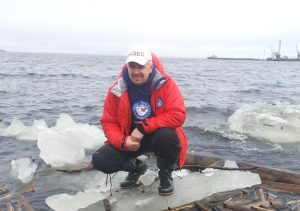
Hams from several other Nations are in process to get the special callsigns. The list will became longer and we will update it when new entries will coming out.
.
Eugene Shelkanovtsev RZ3EC (pic aside), Vice President of the Russian Robinson Club (About club – Russian Robinson Club (rdxc.org)) has just reported :
During the 6Øth Anniversary of ATS event, 12 different call (R.6ØANT) will be active from Russia starting from 1 October, from different regions. In addition 1 “Joker Station” will be on air as well. More details will be available a little later».
.
.
.
On the mean time, Karsten, DL1RUN has informed WAP that, DQ6ØANT is planing an activation day on 2021-june-23th . This is the day of Antarctic Treaty Signature. From the early morning to the late evening DQ6ØANT will be on air, working on all bands. Favorite Modes are CW and SSB.
All QSO’s are automatically confirmed via E-QSL. QSL cards via the office must be requested via the website https://60ant.de/en/qsl-anfordern-en.
More Information about this activity: www.60ant.de
Different Award Programs will be join the 6ØATS, stay tuned!

 Now climate change is undermining that success story. About 90% of the world’s surface fresh water is locked up in the Antarctic Ice Sheet and, as the planet heats up, glaciers whose collapse would deluge coastal cities from New York to Jakarta are melting and growing less stable.
Now climate change is undermining that success story. About 90% of the world’s surface fresh water is locked up in the Antarctic Ice Sheet and, as the planet heats up, glaciers whose collapse would deluge coastal cities from New York to Jakarta are melting and growing less stable. Asuka Station, located at 71°31’29’’South, 24°07’50’’East, altitude: 980.3mts was established in March, 1985 in Dronning Maud Land, 670 km southwest of Syowa Station (WAP JPN-Ø3).
Asuka Station, located at 71°31’29’’South, 24°07’50’’East, altitude: 980.3mts was established in March, 1985 in Dronning Maud Land, 670 km southwest of Syowa Station (WAP JPN-Ø3).
 Ice is thick in this particular region, and therefore extremely difficult to access. In 2012, the latest research vessel “Siras” could not even come close to the shore. Since that time, Japan was the country that lost the war, some thought that it had the unfortunate fate. However, as a result, this place was favorable for study and research.
Ice is thick in this particular region, and therefore extremely difficult to access. In 2012, the latest research vessel “Siras” could not even come close to the shore. Since that time, Japan was the country that lost the war, some thought that it had the unfortunate fate. However, as a result, this place was favorable for study and research.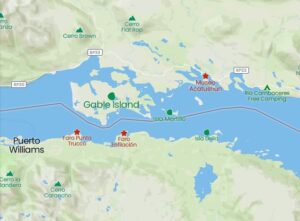 Gable Island (Isla Gable) is an Argentine island belonging to the Ushuaia Department of Tierra del Fuego Province of, Antarctica and the South Atlantic Islands in Argentina.
Gable Island (Isla Gable) is an Argentine island belonging to the Ushuaia Department of Tierra del Fuego Province of, Antarctica and the South Atlantic Islands in Argentina.
 The German Research Icebreaker Polarstern with the Call DPØPOL/MM (Op: Andreas, DL3LRM) will be active again in November/December 2021, still on time to join the 60th Anniversary of the Antarctic Treaty Signature. DPØPOL/MM will be
The German Research Icebreaker Polarstern with the Call DPØPOL/MM (Op: Andreas, DL3LRM) will be active again in November/December 2021, still on time to join the 60th Anniversary of the Antarctic Treaty Signature. DPØPOL/MM will be 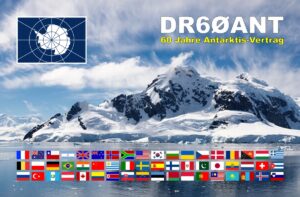
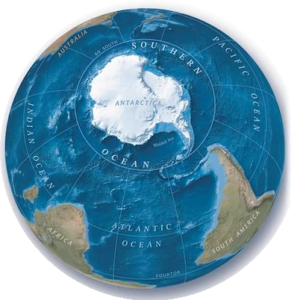 Update your atlas: Southern Ocean recognised as world’s fifth ocean by Nat Geo cartographers
Update your atlas: Southern Ocean recognised as world’s fifth ocean by Nat Geo cartographers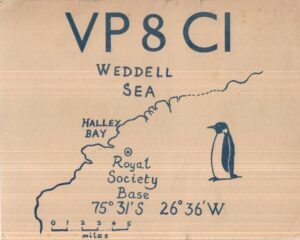 Bill Ashley KF5BRB has sent a very rare QSL of VP8CI, active from Royal Society Base built at 75° 31′ South, 26° 36′ at Halley Bay, West Weddell Sea on January 6th 1956
Bill Ashley KF5BRB has sent a very rare QSL of VP8CI, active from Royal Society Base built at 75° 31′ South, 26° 36′ at Halley Bay, West Weddell Sea on January 6th 1956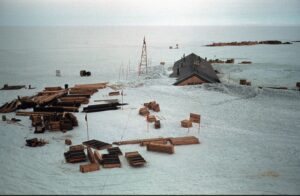
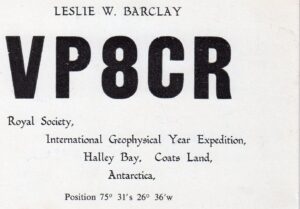
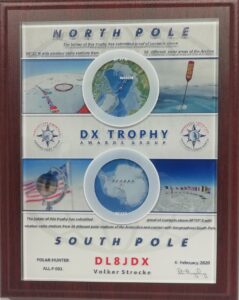 The North Pole & South Pole – DX Trophy (NSP).
The North Pole & South Pole – DX Trophy (NSP). is excited to announce the world-renowned Polar exploration vessel formerly known as MS Hanseatic and Society Adventurer will be joining the fleet from May 2022.
is excited to announce the world-renowned Polar exploration vessel formerly known as MS Hanseatic and Society Adventurer will be joining the fleet from May 2022.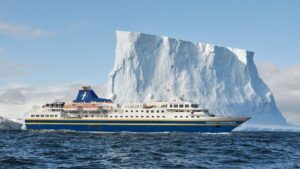 Built in 1991 at Finland’s Rauma shipyard and specifically designed for Polar exploration, Heritage Adventurer is 124-metres long, boasts a 1A Super ice class and an impressive history of Polar and remote region exploration.
Built in 1991 at Finland’s Rauma shipyard and specifically designed for Polar exploration, Heritage Adventurer is 124-metres long, boasts a 1A Super ice class and an impressive history of Polar and remote region exploration.